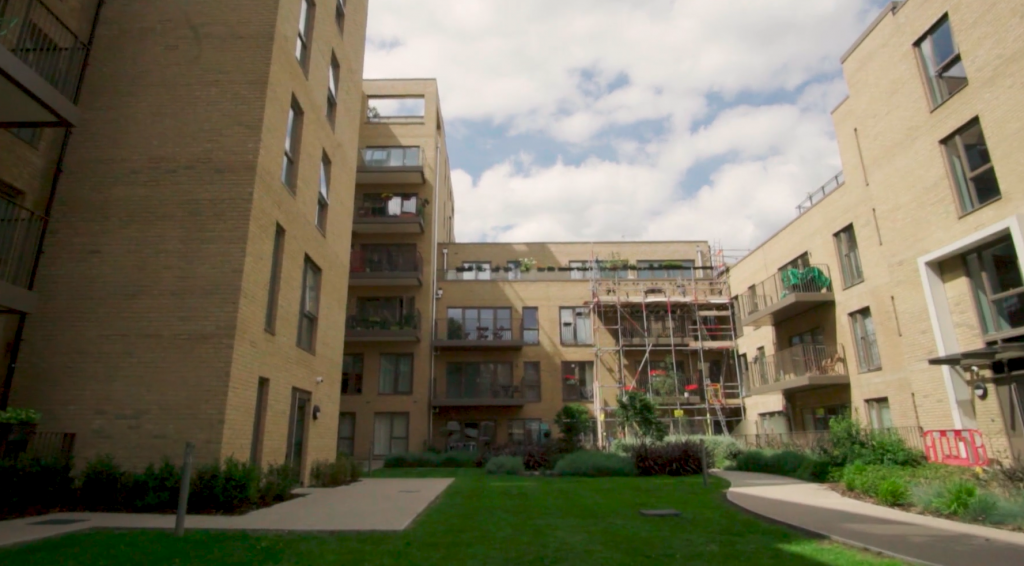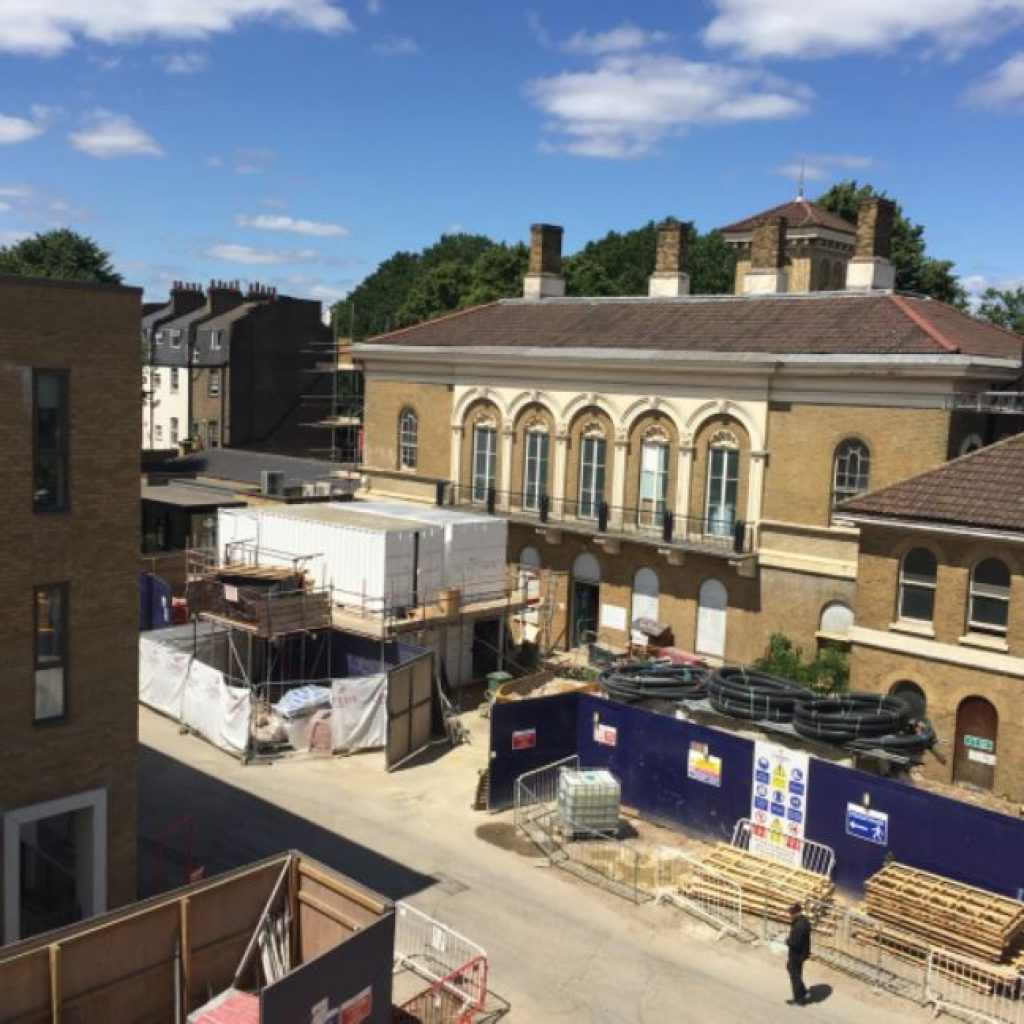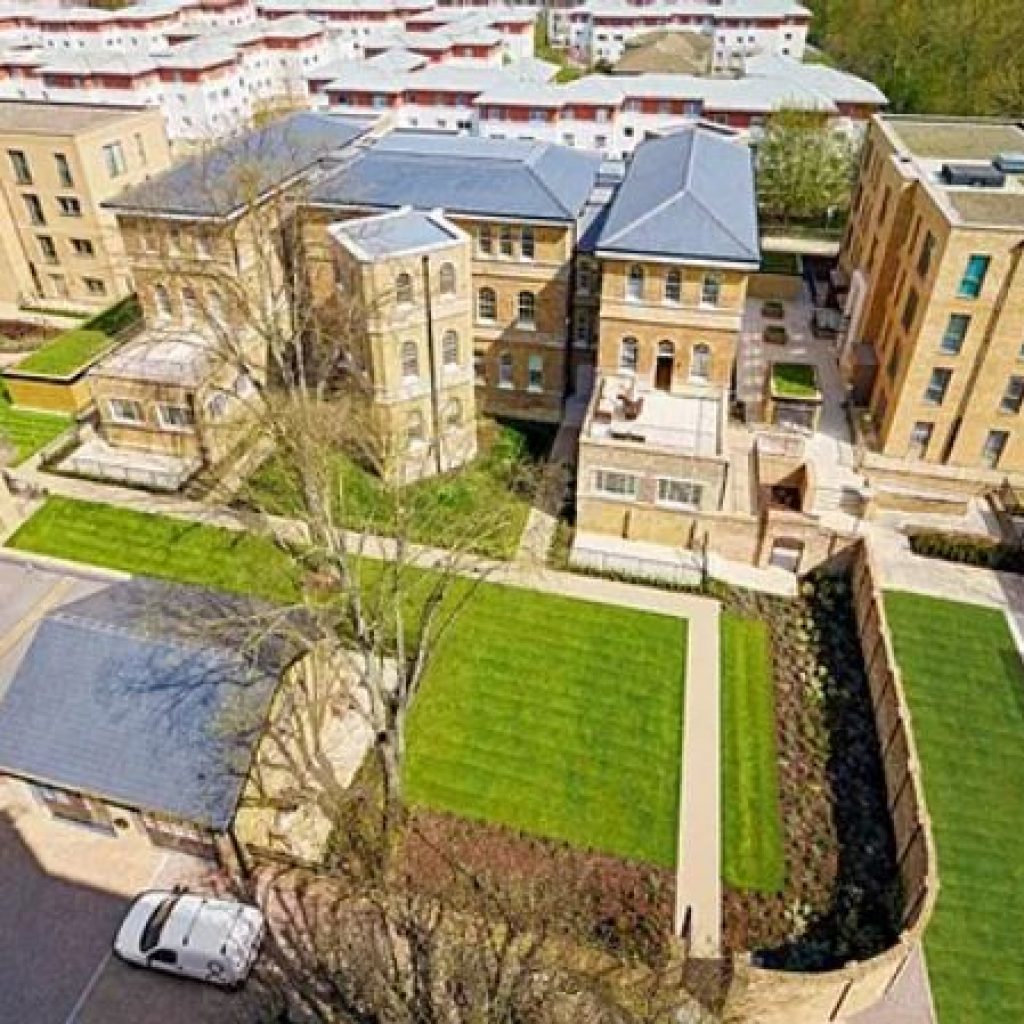Subscribe to our joint NEWSLETTER for
EUTROPIAN &
COOPERATIVE CITY MAGAZINE

The St Clement’s Hospital Site in London has had a long journey from being a workhouse to a medical facility and now to a Community Land Trust residence. After the last residents moved into the facility in 2019, this site which had been closed off to the outside for the past one hundred and seventy years, opened up. As much as the site is rich in its history and heritage, the new residents coming in have gradually started to convert the spaces as their own. its history is alive in the legacy of the buildings as well as in the memory of the community who lived around the facility or benefited from it. It was a site which used to be closed off with big gates and walls, is now open with routes and the open space has been converted to a park. Not only has the site opened up itself, but has also allowed other spaces around it to be welcoming, such as the cemetery opposite its southern entrance.
One of the things the community wanted was routes through and that is what is happening now. So now you can work from the main street, through the site to the cemetery, which is now a beautiful park. As time changes, the meaning of these places changes. Before, rarely would you exit at the southern end of the site and pass through the cemetery.
Nicola De Quiency
The St Clement’s site has been converted to facilitate different types of residents in private, social and CLT homes. But all the residents and different housing categories have integrated in such a way that there is no sign of differences when one visits the compound. Now that all residents have settled in and have started converting their spaces into their homes, one can witness personal elements here and there, like gardens and decorated balconies. At the same time, many of the residents are aware of the history of the place and the journey it took to get where it is now and understand their place in the narrative. They take pride in occupying a space that has a rich and complex architectural history and memory.
What was nice for me was that these new residents were very proud to be there and they are engaging. I have met people who are aware that originally they are in the part where the married couples were and that is very fascinating because men, women, and children were segregated in the workhouses. I thought it is quite interesting that he was engaging with that…
Nicola De Quiency

After most of the housing units were ready and the residents moved in, a closely-knit community emerged in the wake of the Covid-19 crisis. The residents have been engaged in setting up the Resident Management Company to work together and address issues they might face as a community of the compound of individually. Many young residents who suffered from mental health issues during the pandemic got support from the community in overcoming these issues. This crisis has helped the residents build a strong bond right in the beginning and brought the people together to think together for the betterment of the people and to help each other out in difficult situations.


I think that our residents did quite well because they had the CLT homes. They had more space which they wouldn’t otherwise have. I think a lot of residents in ST Clements supported each other well. They were interconnected in looking after one another. London CLT also had some grant money from members so if anyone was struggling to pay for things during Covid we would help. We had some members who did the shopping and distributed the things among those in need. So I think that when times were difficult during Covid it was good that CLT had a community.
Hannah Emrey Wright
The mission of CLT London for the future is to create communities, affordable homes, and trusted neighborhoods. In addition, focus is given to innovation in the work being carried out. Be it on the physical buildings on the ground or the administrative level. The aim is to build local leaders, capacity building of local communities so that they can take ownership of where they live. The conversion of the whole facility from a closed-off site to now a permeable space, open to the whole surrounding community is a legacy of the present generation for the future. The openness and its impact on the surrounding area are also evident from the community activity within the facility as well as surrounding it.
The heritage of the building as a former hospital and workhouse remains, while new people are coming in and the memory of the facility is evolving. The adaptive reuse work on the building is done keeping the memory of the past alive while incorporating flexibility in the methods that can be worked on in the future. The aim is to have intention in every decision that is made about the past, present, and future.

We try to influence decision-makers so that changes and decisions can influence other community-led groups that are coming out and it is easier for them to access funding. So I think we are contributing to change the sector in a way that would be lasting.
Hannah Emrey Wright
The conversion of John Dunham into a community center for the residents as well as the whole neighborhood is an example of openness and integration together. It faces the neighborhood and protects the compound to some extent. It is a space that when fully converted, will physically bring together and make use of the openness of the compound in the true sense.
Follow London CLT on social media.

Eutropian is proud partner of the Open Heritage project, which identifies and tests the best practices of adaptive heritage re-use in Europe. We lead the research on case studies and produced documentary films on select sites.
Got questions? For more information about the project contact Levente Polyak.
| Cookie | Duration | Description |
|---|---|---|
| cookielawinfo-checkbox-analytics | 11 months | This cookie is set by GDPR Cookie Consent plugin. The cookie is used to store the user consent for the cookies in the category "Analytics". |
| cookielawinfo-checkbox-functional | 11 months | The cookie is set by GDPR cookie consent to record the user consent for the cookies in the category "Functional". |
| cookielawinfo-checkbox-necessary | 11 months | This cookie is set by GDPR Cookie Consent plugin. The cookies is used to store the user consent for the cookies in the category "Necessary". |
| cookielawinfo-checkbox-others | 11 months | This cookie is set by GDPR Cookie Consent plugin. The cookie is used to store the user consent for the cookies in the category "Other. |
| cookielawinfo-checkbox-performance | 11 months | This cookie is set by GDPR Cookie Consent plugin. The cookie is used to store the user consent for the cookies in the category "Performance". |
| viewed_cookie_policy | 11 months | The cookie is set by the GDPR Cookie Consent plugin and is used to store whether or not user has consented to the use of cookies. It does not store any personal data. |
